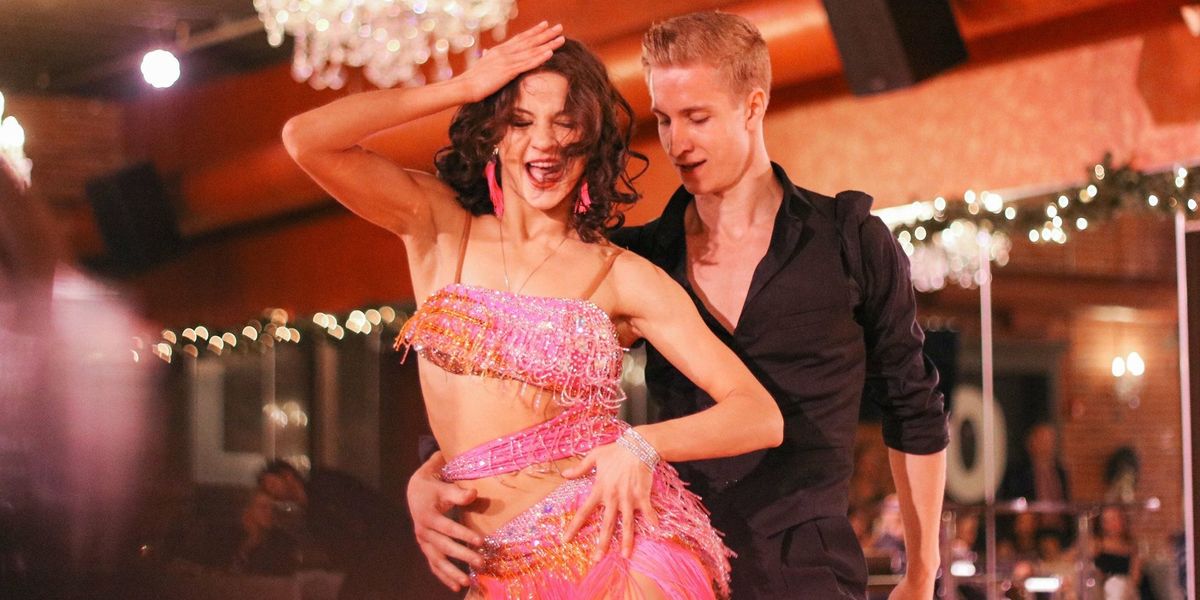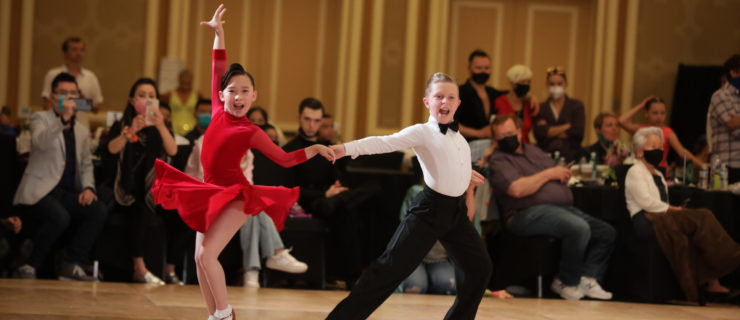From Cha Cha to Waltz: Breaking Down Competitive Ballroom Dance Styles
New to the competitive ballroom world? Even experienced studio dancers can be a bit confused by the variety of styles on display at ballroom competitions. In the United States there are two major organizations that sanction ballroom competitions, USA Dance and the National Dance Council of America. They recognize four main dance categories for competition: International Ballroom, International Latin, American Smooth, and American Rhythm. (Outside of the U.S., most people exclusively learn and compete International styles.)
We asked ballroom experts to break down the categories, and the dance styles that fall under each one.
International Ballroom (Standard)
International Ballroom, also called Standard, includes five dances: waltz, tango, Viennese waltz, slow foxtrot, and quickstep. With dances that date back hundreds of years, Standard is the oldest ballroom style, developed largely in Europe. Dances in this category are performed exclusively in closed positions, meaning partners are required to stay in contact at all times.
International Latin
International Latin, usually referred to as simply Latin, also includes five dances: cha cha, samba, rumba, paso doble, and jive. Like Standard, Latin developed in Europe before attaining worldwide popularity. But unlike the Standard dances, only the paso has European roots. Cha cha and rumba are both Cuban dances, the samba originated in Brazil, and jive, the fastest of the Latin dances, developed from Lindy Hop, which was born in the USA. “What distinguishes Latin is the sensual connection of a couple,” says Latin expert Vlad Kvartin.
American Smooth
American Smooth includes four dances adapted from the Standard category—waltz, tango, foxtrot, and Viennese waltz—and is therefore often confused with Standard. But Smooth allows closed, open, and solo dance movements, creating more freedom in competition choreography. And although each dance shares characteristics with its Standard counterpart, most Smooth dance figures are unique. Standard and Smooth tango, for example, both use the same percussive and passionate expression inspired by the dance’s Argentinian roots, but the basic figures have four and five steps, respectively, making the footwork entirely different in each category.

Natalie Duke-Honkonen and partner Joe Hasson dance together (Ryan Kenner, courtesy Duke-Honkonen)
American Rhythm
The American Rhythm category includes five dances: cha cha, rumba, swing, bolero, and mambo. With the exception of swing, which is native to the U.S., Rhythm dances have Afro-Cuban roots and share a distinctive hip action known as “Cuban motion.” While similar hip motion is also found in the Latin category, bent knees differentiate the way Rhythm dancers move.
Swing dance requires a bit more breakdown. “Swing is an umbrella,” explains Rhythm expert Natalie Duke-Honkonen. “There are many different styles of swing, depending on the music and what area of the country you are in.” From Carolina shag to West Coast swing, there are nearly 20 different versions of swing danced in the United States. East Coast swing is the style most commonly danced in ballroom competitions, often to big band music or old-school rock and roll.
Who Dances What?
While most professionals ultimately specialize in a single category—Kvartin in International Latin and Duke-Honkonen in American Rhythm, for example—many competitors begin by learning all the dances in either the International or American categories. In competition, this is known as International 10-Dance and American 9-Dance. At every competition, “there are the same 19 dances from all over the world, each with their own personality and defining characteristics,” explains Duke-Honkonen. It takes a tremendous amount of skill to become a ballroom champion in any one category.



